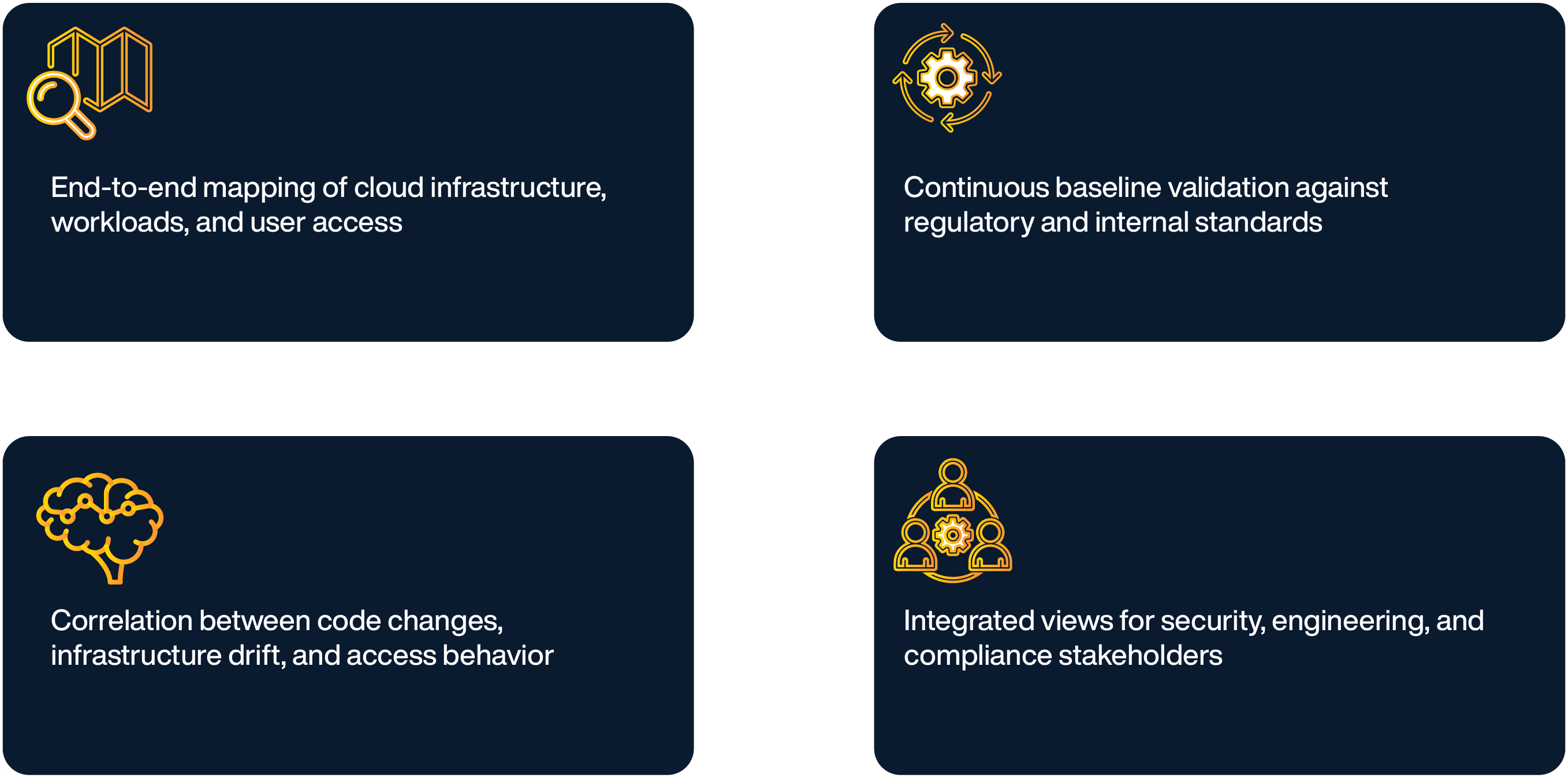Why Cloud Security Requires Financial Sector Precision
Cloud adoption in financial services is accelerating, but the transition brings a new class of risks.
Dynamic Environments
Containerized workloads, microservices, and continuous deployment make governance complex
Beyond Checklists
Security requires real-time alignment between cloud ops, identity governance, and compliance
Scale Without Gaps
From high-frequency trading to customer apps—security must match business velocity
Real-World Cloud Vulnerabilities We Discover
Our penetration testing and red team exercises consistently expose critical cloud security gaps.
During cloud security assessments, we frequently exploit:
Misconfigured IAM Roles |
Poorly configured Identity and Access Management (IAM) roles can allow attackers to exploit overly broad permissions or unintended trust relationships. For example, if a user or service role has the ability to modify policies or attach roles to itself, an attacker can escalate privileges—gaining administrative control over systems they were never meant to access.
|
Hardcoded Credentials |
Storing usernames, passwords, API keys, or tokens directly in code or configuration files—especially inside container images or serverless deployments—exposes sensitive access credentials. If attackers discover these hardcoded secrets (via public repositories, image scanning, or reverse-engineering), they can authenticate against services like databases, cloud accounts, or third-party APIs, bypassing traditional perimeter defenses.
|
Exposed Management Interfaces |
Systems that expose administrative dashboards, internal REST APIs, or other management functions to the internet without proper authentication or IP restrictions are low-hanging fruit for attackers. These interfaces are often intended only for internal use, but when improperly exposed, they can be exploited to reconfigure systems, exfiltrate data, or gain a foothold in the network.
|
Unencrypted Data Stores |
Data stores—like database snapshots, cloud storage buckets, or backup volumes—that lack encryption at rest or in transit are vulnerable to data theft. If unauthorized users gain access to these locations, and the data is stored in plaintext, sensitive information such as financial transactions, PII, or IP can be easily exfiltrated or sold.
|
Insecure CI/CD Pipelines |
Continuous Integration and Continuous Deployment (CI/CD) systems that lack proper isolation, authentication, or validation checks can be hijacked by attackers. Exploiting these flaws can allow adversaries to inject malicious code into builds, tamper with release artifacts, or compromise dependencies—resulting in widespread supply chain attacks and potential downstream infections for customers.
|
Why This Matters: These aren't theoretical risks—they're active attack paths we've used to compromise financial cloud environments during authorized testing.
How OSec Tests and Secures Cloud Infrastructure
Cloud Penetration Testing
Deep-dive assessments of AWS, Azure, and GCP environments to identify exploitable vulnerabilities
Cloud Red Team Exercises
Simulated attacks testing your ability to detect and respond to cloud-based breaches
Continuous Testing (CTEM)
Ongoing vulnerability discovery as your cloud infrastructure evolves and scales
Purple Team Operations
Collaborative exercises improving cloud detection capabilities and incident response
Cloud Security Research
Cutting-edge research into emerging cloud attack vectors and financial sector threats
Incenter's Role in Financial Cloud Security
Incenter continuously tests your cloud infrastructure for vulnerabilities and validates security controls in real-time.
Our platform provides:

With Incenter, your cloud security posture becomes visible, defensible, and adaptive. It's not about more alerts. It's about focused, cross-context insight.
Explore More
Financial API Security
Compliance Readiness for Financial Institutions
Build Confidence in Every Configuration
Engage with OSec to assess your cloud footprint, identify exposure points, and strengthen control alignment.
